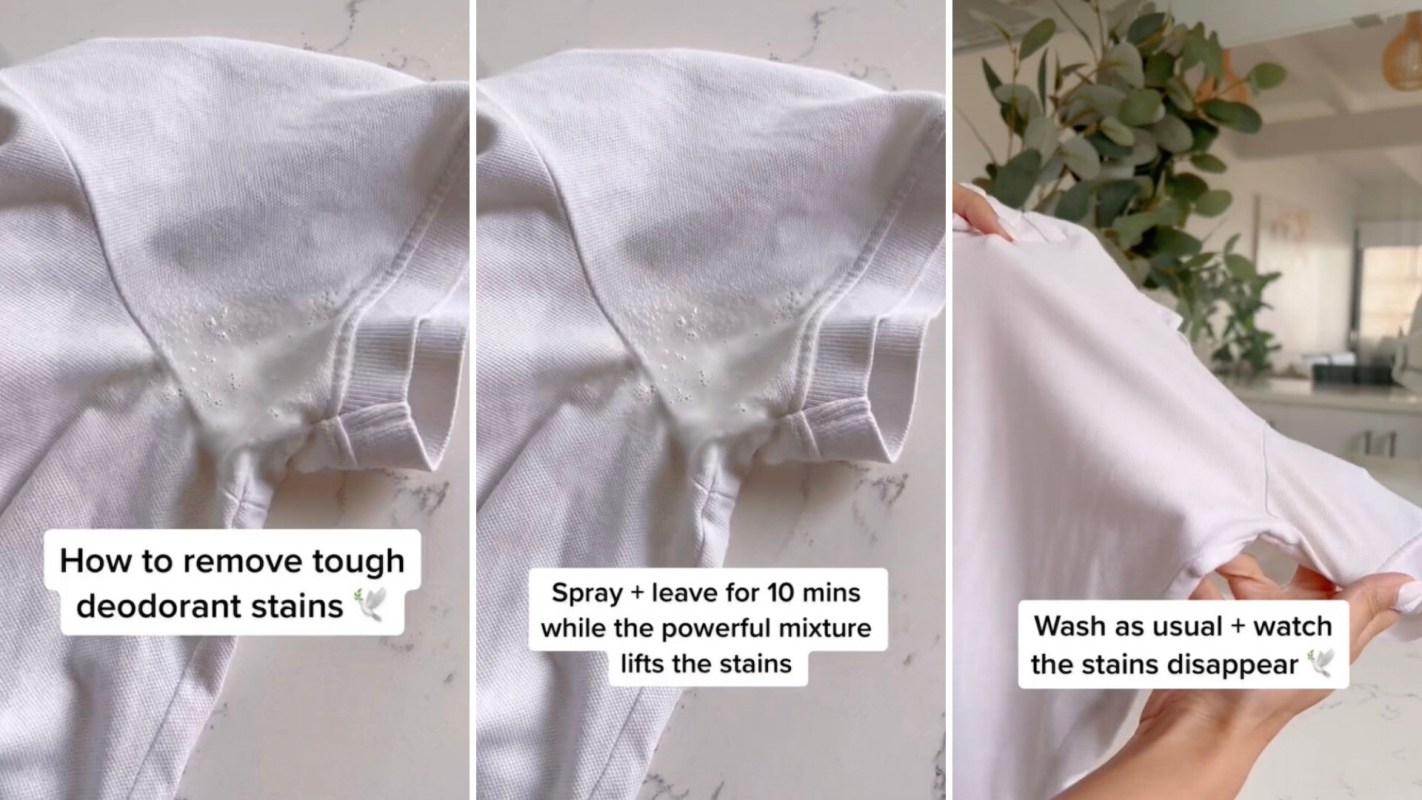Laundry is a notoriously tedious and dreaded chore, so when you add stained clothes in need of some TLC into the mix, you're really in for it.
Luckily, one TikToker shared an astonishingly simple hack to get rid of one of the most common stains — deodorant stains.
The scoop
Chantel Mila (@mama_mila_) uses her platform to post about all things household hacks, from organizing, to interior design, to cleaning.
Her hack to get rid of deodorant stains requires just two household ingredients and almost no effort at all.
Chantel directs viewers to combine two parts hydrogen peroxide — she recommends 3% — and one part dish soap in a spray bottle.
The solution shouldn't stain your clothes, but it's always a good idea to do a patch test first just to be sure.
Then, spray the solution onto the deodorant stain and go work on some other chores for 10 minutes. After letting the solution soak in, throw the clothing item in with the rest of your laundry.
"Wash as usual [and] watch the stains disappear," Chantel instructs in her video.
@mama_mila_ The easy way to remove underarm deodorant stains for good 🙌 #laundryhacks #hometips #diyspray ♬ gimme gimme gimme - ❁ཻུ۪۪♡ ͎. 。˚ °
How it's helping
This simple recipe utilizes products that you most likely already have lying around — making it much more cost-effective than spending money on stain removers that may or may not work.
In fact, this isn't even the only cost-effective stain remover. Other household items can be used to target makeup stains, and believe it or not, eggshells can be used to target just about any stain.
Plus, store-bought stain removers have a variety of chemicals in them, and some of these can actually cause harm to humans.
Bleach and ammonia, for example, can cause skin irritation, respiratory issues, and eye damage.
These chemicals also pose a threat to the environment. They can seep into the ecosystem that exists just on the other side of your walls, contaminating the natural water sources and soil. This, in turn, poisons the animals and plants that need them to survive as well as other forms of wildlife, like insects.
What everyone's saying
Many of the comments on the post were asking for specifics on the colors and kinds of fabric that could handle this hack. Chantel's answer across the board was that most, if not all, fabric could withstand the ingredients in the mixture, but that she always recommends a patch test to be safe.
A few other users were thrilled to find a solution for such a common stain. "Oh thank you!" wrote one user. "[I] will give this a try!"
Join our free newsletter for easy tips to save more, waste less, and help yourself while helping the planet.









